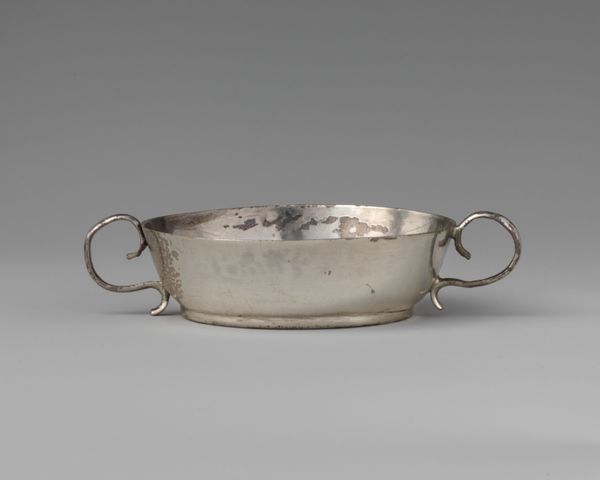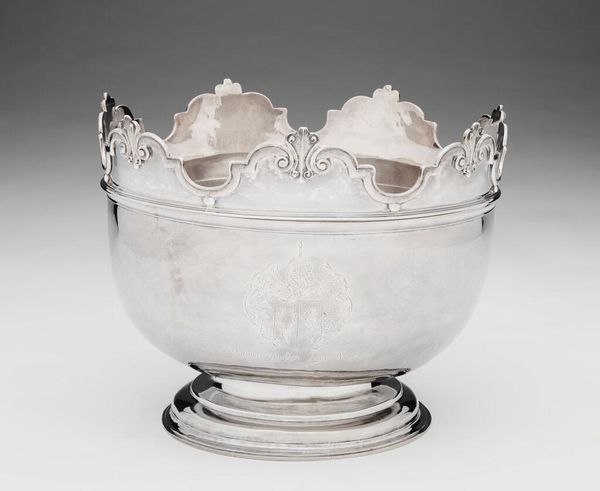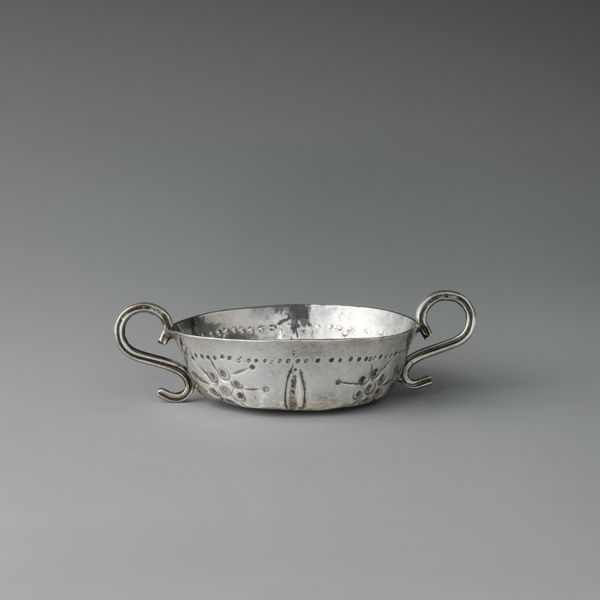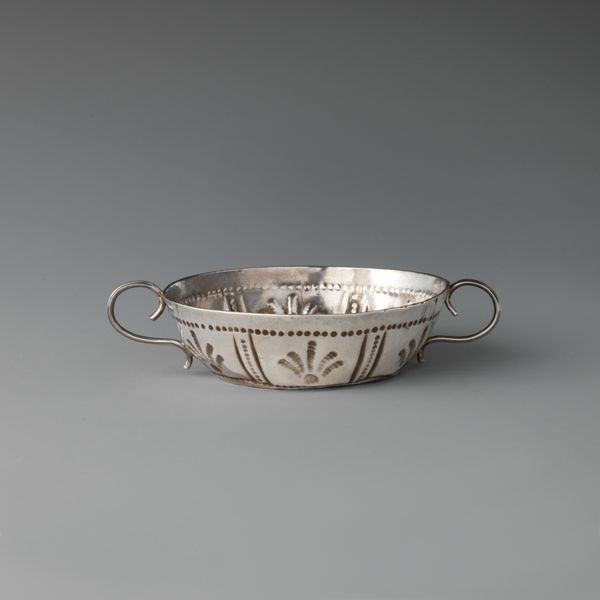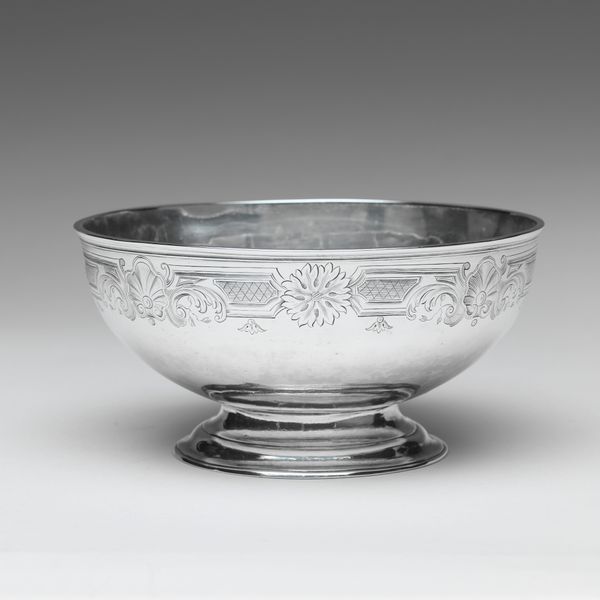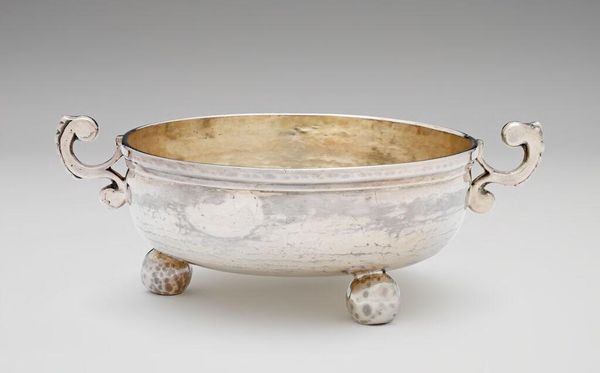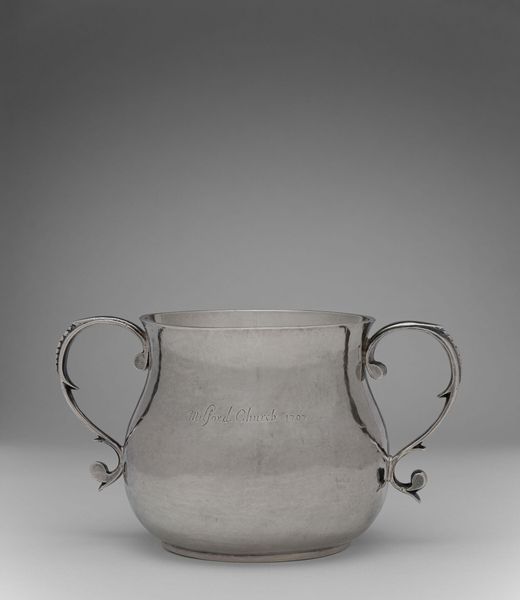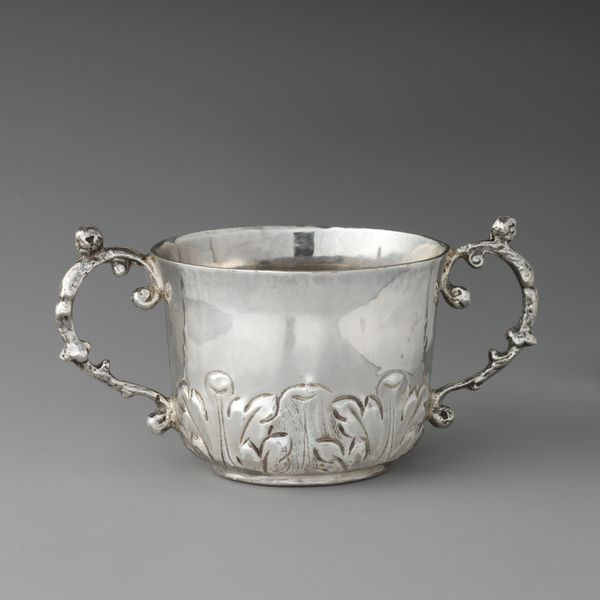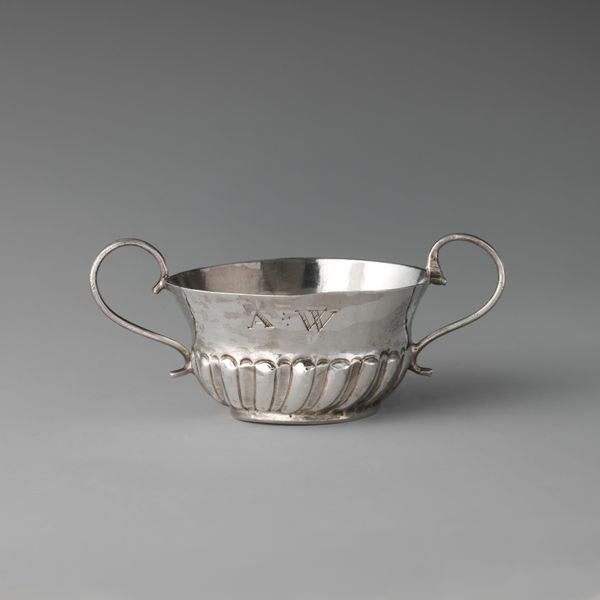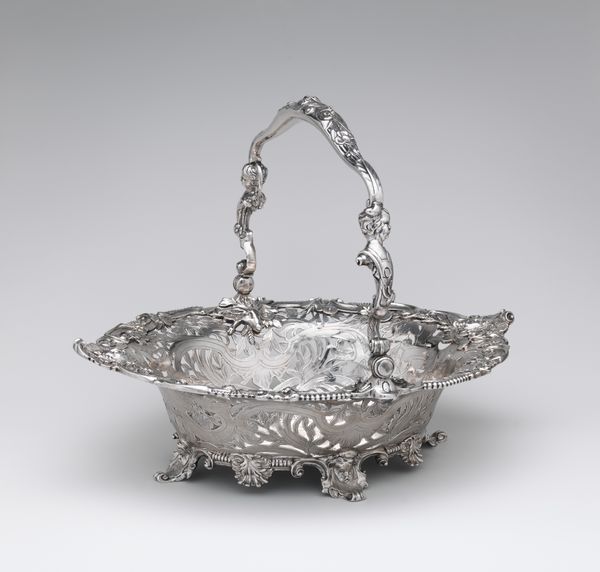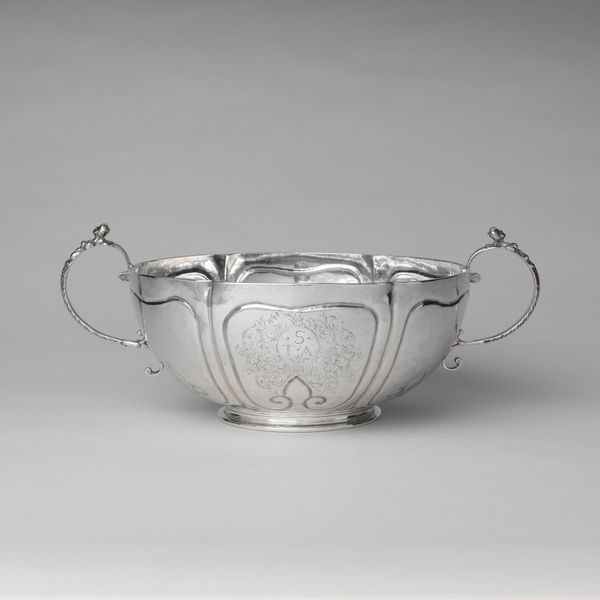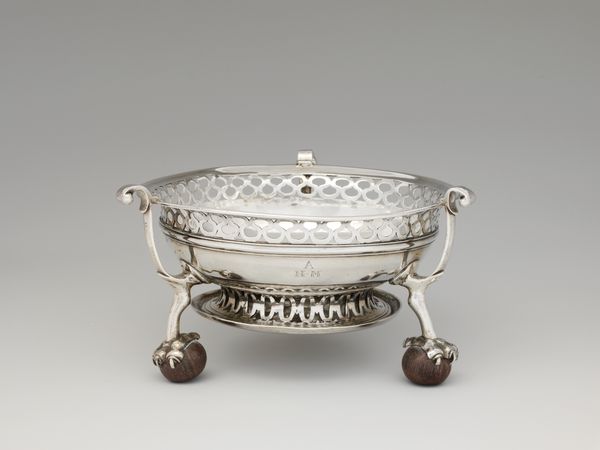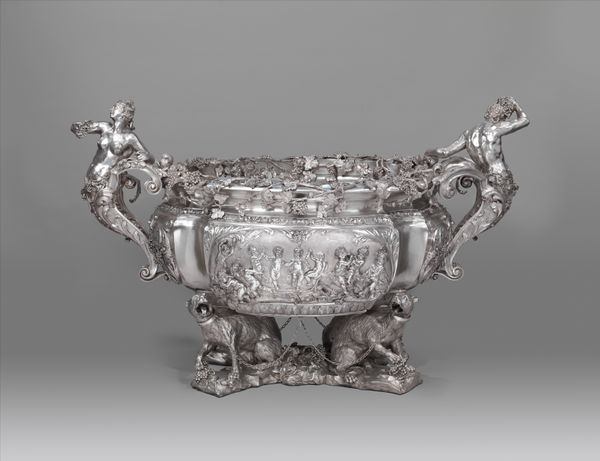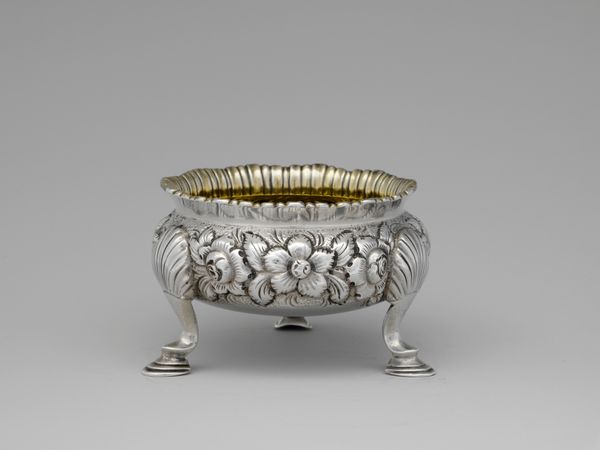
silver, metal, sculpture
#
silver
#
baroque
#
metal
#
sculpture
#
decorative-art
Dimensions: Height: 7 5/8 in. (19.4 cm); Diameter (without handles): 14 3/4 in. (37.5 cm)
Copyright: Public Domain
Curator: The first thing I notice is its reflective quality. The way the light plays across its surface. Editor: This is "Monteith," a silver wine cooler made around 1686 or 1687. It’s a remarkable piece of decorative art now residing at the Metropolitan Museum of Art. Curator: Wine cooler you say? The decorative engravings of figures around the bowl appear like proclamations—it’s as if it were a character bearing witness and participating in an era of celebrations. What does it suggest about courtly life or societal norms? Editor: I think we have to view the bowl's engravings as symbolic rather than literal depictions. Consider that, beyond its function, the 'Monteith' served as a declaration of wealth and status within courtly society. Silver itself has historically been charged with socio-economic meaning. Curator: Yes, silver signifies affluence, definitely—a symbol of power during its era. It's almost a silent observer. Given its purpose in holding wine, I see it intertwined with themes of social gathering and perhaps even excess during its time. How might this bowl and similar pieces reflect broader social inequalities, who benefited from these displays of grandeur, and at whose expense? Editor: The interplay of concave and convex forms that make up its undulating walls! This not only enhances its aesthetic appeal but also maximizes its reflective qualities. The formal symmetry creates this sense of balance and, dare I say, harmoniousness? Curator: That emphasis on harmony reminds me of power structures. How might such displays of luxury, rendered harmonious through artful design, act as distractions? Editor: What about the lion heads, do they strike you as classical motifs reinterpreted through the Baroque lens? Curator: Without a doubt, but classical themes were not simply aesthetic choices; they legitimized those in power by association to prior powerful empires. Thinking critically, the object then reflects broader social inequalities where grand displays benefited only an elite. Editor: Thank you. The conversation gave a new sense to my perception, which started with noticing the surface light and composition and will end with considering questions of historic and social justice.
Comments
No comments
Be the first to comment and join the conversation on the ultimate creative platform.
